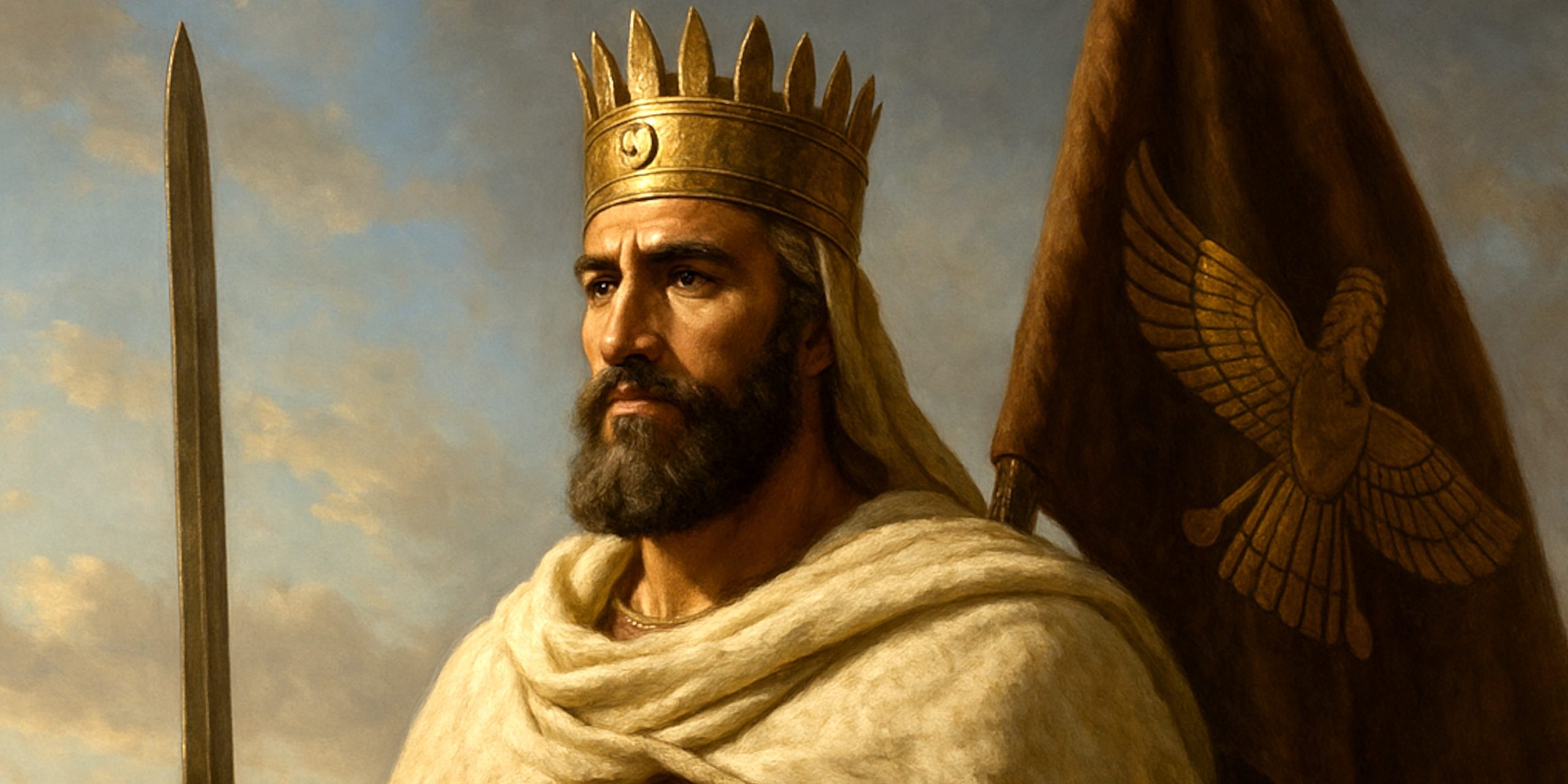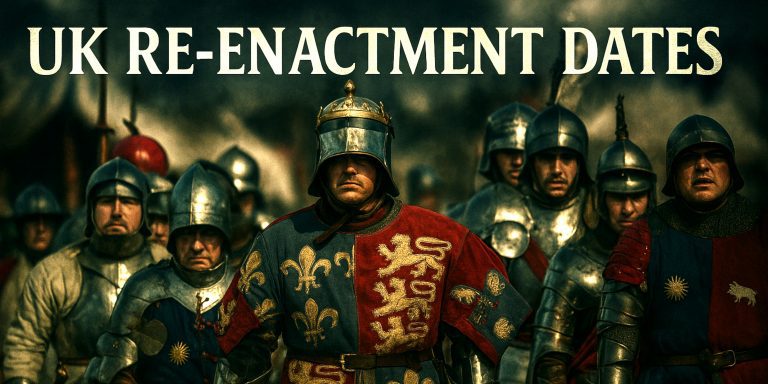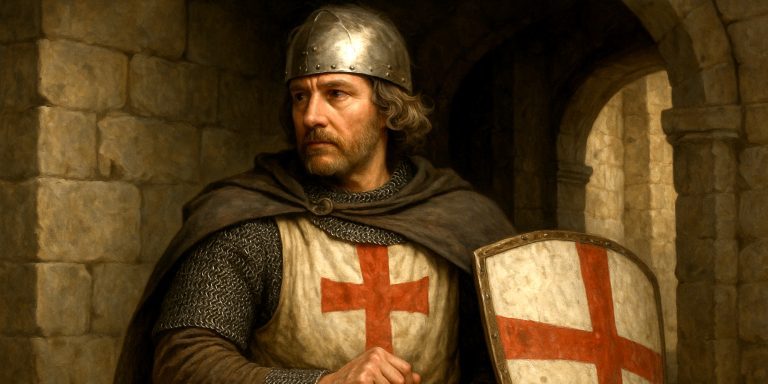
Cyrus II of Persia, better known as Cyrus the Great, was the founder of the Achaemenid Empire and one of the most influential rulers in ancient history. His leadership not only shaped the course of Persian power but also established ideas of governance, tolerance, and imperial unity that resonated through the centuries.
Arms and Armour
Cyrus ruled in the 6th century BC, at a time when the Persians were absorbing military traditions from older civilisations such as the Medes, Elamites, Babylonians, and Lydians. While no surviving armour or weapons can be definitively attributed to him personally, archaeological finds and reliefs from the era give us an idea of what his troops likely used.
- Weapons: Persian infantry commonly carried spears, akinakes (a short thrusting sword), bows, and daggers. The akinakes, which would become synonymous with Persian elite warriors, may have been part of a nobleman’s equipment.
- Armour: Soldiers wore scale armour made of bronze or iron plates sewn to leather. These offered flexibility and decent protection. Some cavalry units likely had more elaborate gear, including horse armour.
- Shields: Light infantry typically used wicker or leather-covered shields, while more heavily armed troops may have carried larger rectangular or circular variants.
There is limited direct evidence of Cyrus himself wearing armour, but as a king who led campaigns in person, he would likely have worn ornate versions of what his elite guards used, possibly enriched with gold and embroidery to reflect royal status.
Battles and Military Accumen
Cyrus the Great’s military record is remarkable not just for its success but also for the innovative strategies he employed.
- Conquest of the Medes (c. 550 BC): Cyrus overthrew his Median overlord Astyages and unified the Medes and Persians into a single polity. He used a combination of diplomacy and subversion, including convincing Median generals to defect mid-campaign.
- Lydian Campaign (c. 547 BC): Croesus of Lydia, famed for his wealth, marched against Cyrus but was defeated at the Battle of Thymbra. Cyrus employed clever battlefield tactics, including the use of camels to panic Lydian horses. The fall of Sardis soon followed.
- Babylonian Conquest (539 BC): Perhaps his most famous achievement, Cyrus took Babylon with minimal destruction. His army diverted the Euphrates to enter the city under its walls. Babylon’s fall was not just a military conquest but a political masterstroke, as Cyrus portrayed himself as a liberator and respected local customs.
Cyrus’s military acumen was matched by his skill in administration. He allowed religious and cultural autonomy across his empire, appointed local governors (satraps), and set the foundations of imperial bureaucracy that would endure for centuries.
Where to See Artefacts from His Reign
While relatively few artefacts can be definitively traced to Cyrus himself, several key museums house items from his reign or directly related to his legacy:
- The British Museum (London): Home of the Cyrus Cylinder, a clay document from Babylon often considered the first known declaration of human rights. It records Cyrus’s just treatment of the Babylonians.
- National Museum of Iran (Tehran): Contains Achaemenid inscriptions, tools, jewellery, and some military items excavated from sites linked to early Persian rule.
- Louvre Museum (Paris): Displays Persian reliefs and administrative tablets, including examples of early Achaemenid writing and imagery.
- Persepolis Ruins (Iran): Although built after Cyrus’s death by Darius I, this ceremonial capital echoes his imperial vision. Reliefs and architectural fragments offer insight into the court life that grew from Cyrus’s foundation.
Latest Archaeology Findings
Modern excavations continue to shed light on the world Cyrus built:
- Pasargadae: His capital city, located in present-day Iran, is a UNESCO World Heritage site. Excavations have revealed palaces, audience halls, gardens, and his probable tomb. The tomb itself is a simple stone structure that survived Alexander the Great’s conquest.
- Toll-e Takht: A fortified terrace in Pasargadae where recent work uncovered walls and ceramics that suggest an earlier phase of monumental construction, possibly under Cyrus.
- New Babylonian Sites: Recent Babylonian clay tablets found near Hillah (Iraq) provide more details about Persian administration and taxation during Cyrus’s time, illustrating how he integrated local systems into imperial governance.
Cyrus the Great remains a pivotal figure in ancient history. He conquered vast territories not by brutality alone but by a shrewd combination of force, policy, and pragmatism. His vision for empire, one rooted in tolerance and infrastructure rather than just tribute and control, set a precedent that influenced rulers from Alexander to the modern age. His legacy, preserved in stone, script, and memory, still stands as a testament to leadership that fused military might with political foresight.
Watch the documentary:



